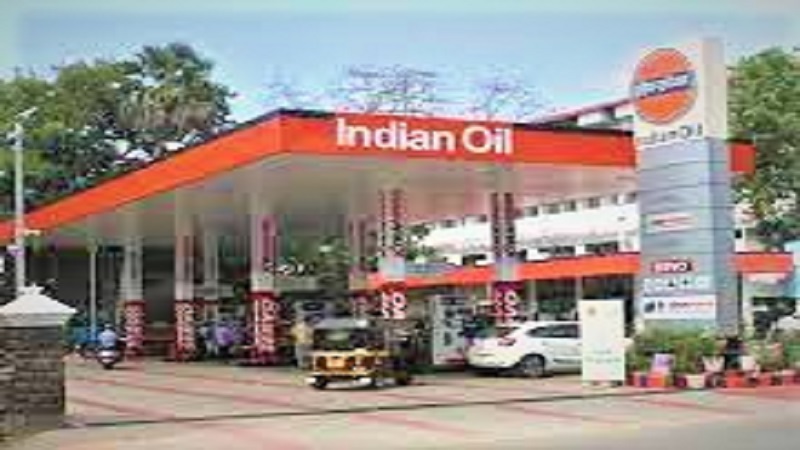A. Harikumar
Thiruvananthapuram, March 18. India’s oil majors: Indian Oil Corporation (IOC), Hindustan Petroleum Corporation Ltd (HPCL) and Bharat Petroleum Corporation Ltd (BPCL) have not increased the prices of diesel or petrol for the last 133 days despite crude oil prices soaring to a nearly 14 year high a few days ago. While the government seems to be absorbing the latest oil shock to a great extent, there may be other factors preventing the government from hiking prices further. The fact that India has the highest fuel prices in South Asia is one of them; the blending petrol and diesel with ethanol and sourcing cheap oil from countries like Russia and releasing from the reserves might also be helping the government to cushion the shock.
This is at a time when the neighbouring country Sri Lanka, is facing an economic crisis as fuel prices there have risen suddenly to a record high, and Sri Lankan rupee depreciated by 30 percent last week. A litre of petrol costs Sri Lankan Rupees (SLR) 250 there and diesel SLR 200. In Pakistan petrol and diesel prices rose to Pakistan Rs 159 on February 16 causing widespread protests. Subsequently president Imran Khan intervened and slashed the prices by Rs 10. Currently petrol costs Pakistan rupee 149.86 and high speed diesel 144.15. Light diesel costs Rs 118.31 a litre.
Fuel prices in South Asia
While the union government deserves praise for forestalling a sudden rise of petrol and diesel prices against the backdrop of current crude oil price rise, it’s to be remembered that even the existing fuel prices in India are sky high. Currently the petrol price is Bangladesh is Rs 78.43, a litre and in Pakistan it is Rs 63.43 a litre. The price per litre of petrol in Sri Lanka is Rs 84 and Nepal is Rs 93. These are all much cheaper compared to the over Rs 100 for a litre of petrol in India currently. However there are countries in the world where petrol prices are even higher than in India, which include Australia where a litre of petrol costs Rs 107.69 and the UK where it is priced Rs 161. (The prices have been arrived at by converting it from local currencies to Indian rupees)
It was widely speculated that by November third week, 2021, the union government had asked the oil companies to freeze the prices of petroleum products in view of the oncoming assembly polls to five states. Naturally, there were apprehensions that the prices would be hiked steeply after March 7, 2022 when the final phase of the elections will be over (in Uttar Pradesh).
But the pleasant surprise is India’s petrol and diesel prices remain steady despite the volatility in crude oil market. A The estimation that oil companies are suffering a loss of Rs 12-13 a litre and the expectation was petrol and diesel prices would be hiked by Rs 10-15. But the government has managed to hold on to the prices existing in the last week of November.
Factors helping Government of India
What helps the government to hold the price at the same level as in November 2021? On March 7, the price of Brent, the benchmark crude went through the roof,. But don’t think India imported all the crude it wanted at the same rate. Crude oil import is a complex process which includes spot and future trading. Indian import prices are based on Indian crude basket price which consists of weighted average of prices of Brent, Dubai crude and Oman Crude. It was the price of Brent which neared $ 140 per barrel. Indian crude basket price have been hovering below $ 130 all along
Ethanol Doping and Russian Crude
The blending or doping of petrol and diesel with ethanol made in India is also one of the factors that helps to control prices. According to reports quoting the Ministry of Petroleum and Natural Gas, the ethanol blending in the fuel supplied by oil marketing companies of India as on 2021, June was 7.93 percent. The government targets to raise it to 10 percent this year and further to 20 percent by April next year. The ethanol is mainly made from sugar as well as excess food grains produced in India. It has helped the country to save billions of dollars of foreign exchange.
While the ethanol extracted from Sugarcane juice is priced at Rs 63. 45 per litre, that which is extracted from C-heavy molasses is Rs. 46.33 per litre. So this helps the government to control prices of fuel, esp at present when prices are very high.
Meanwhile India’s crude oil imports from Russia have surged to 3.6 lakh barrels a day from March 1. This is four times the crude import from Russia during the corresponding period last year. Russia now sells crude to India at a huge discount of $ 20-30 per barrel. This is also helping the government evade the price rise in international markets. To sum up, the Government of India is intelligently using all available options to prevent a sudden steep rise in petrol/diesel prices in India and the government needs to be congratulated for that. But don’t forget that even the existing fuel prices in India are very high.

